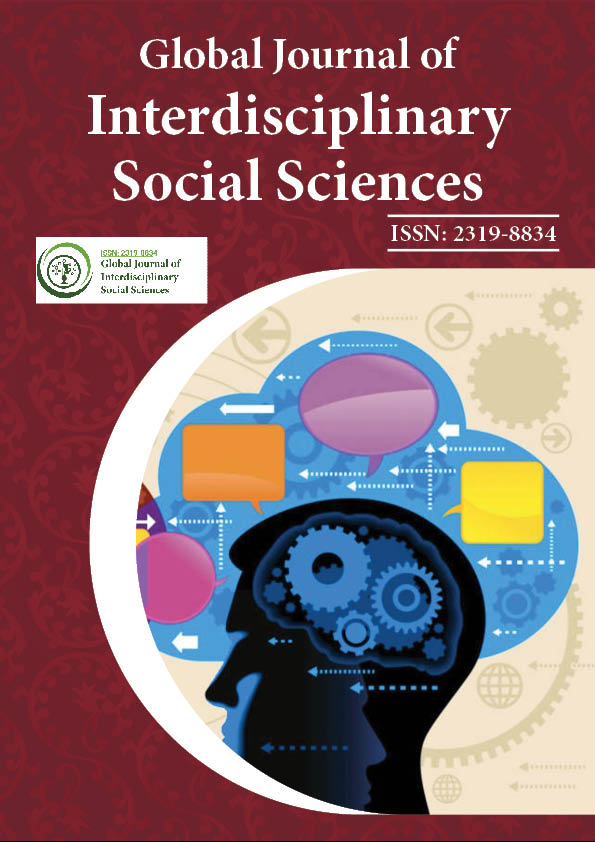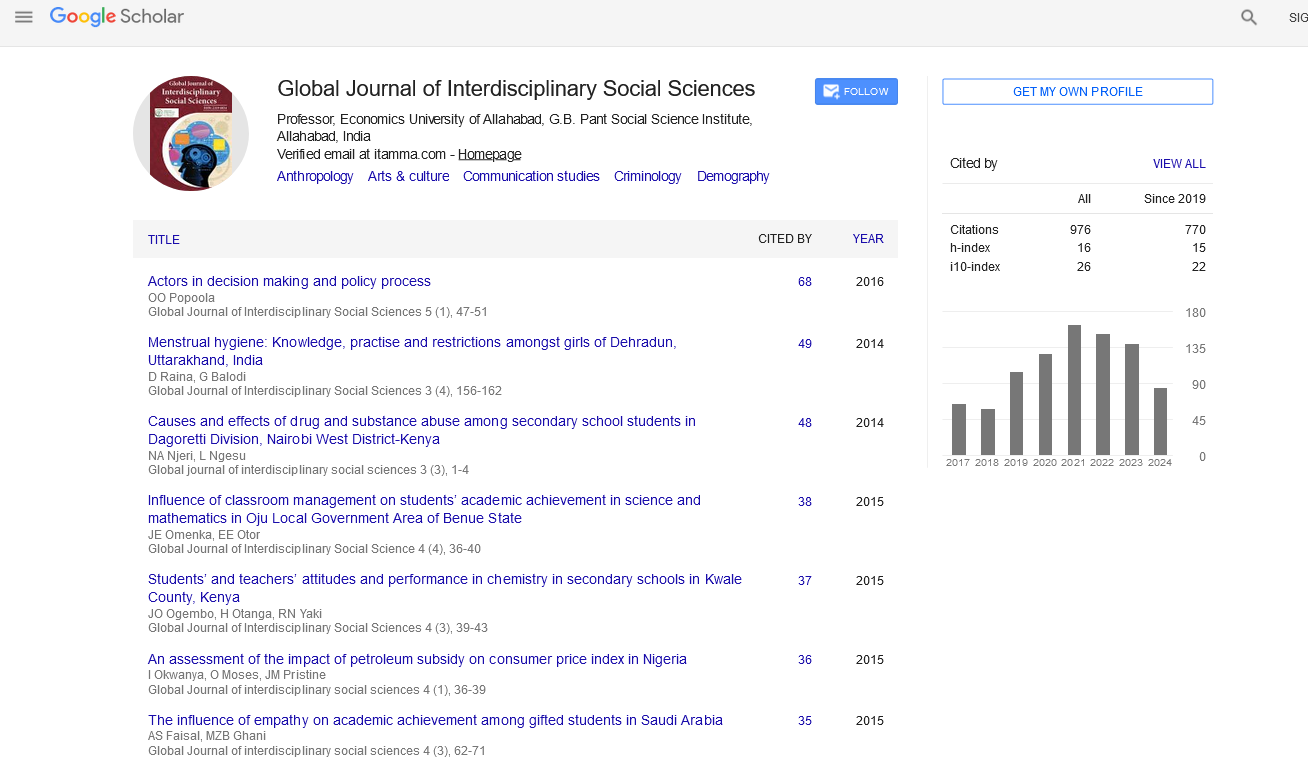Indexed In
- JournalTOCs
- Google Scholar
Useful Links
Share This Page
Journal Flyer

Open Access Journals
- Agri and Aquaculture
- Biochemistry
- Bioinformatics & Systems Biology
- Business & Management
- Chemistry
- Clinical Sciences
- Engineering
- Food & Nutrition
- General Science
- Genetics & Molecular Biology
- Immunology & Microbiology
- Medical Sciences
- Neuroscience & Psychology
- Nursing & Health Care
- Pharmaceutical Sciences
Commentary - (2022) Volume 11, Issue 1
Human and Cultural Ecology
Samuel Jerubbael*Received: 03-Jan-2022, Manuscript No. GJISS-22-12; Editor assigned: 05-Jan-2022, Pre QC No. GJISS-22-12; Reviewed: 19-Jan-2022, QC No. GJISS-22-12; Revised: 24-Jan-2022, Manuscript No. GJISS-22-12; Published: 31-Jan-2022, DOI: 10.35248/2319-8834/22.11.012
Description
Human ecology is defined as the study of the relations of humans with their environments or the study of the division and abundance of humans. This definition is directly based on conventional definitions of biological ecology. Ecology is usually defined as the study of interactions of organisms with their environments and each other. More pointedly, it can be defined as the study of the division and abundance of organisms. This definition is deceptive. It implies much more than it says specifically because virtually everything that humans are and it affects their distribution and infiniteness. Thus, using the term “human ecology” actually defines a broad mission to understand human behavior. So, it is the study of the relationships between humans and their environments is a field with a large scope and convolute history. It arose out of multiple disciplines animal biology, anthropology, geology, ecology, and sociology in the early 1900’s as scientists struggled to make sense of the effect of humans on the man made and natural environment and the impact of environments on the social systems of humans.
Since prehistoric times there have been many attempts to explain events in terms of environmental influences on human behavior. Astrology reports one early system of thought relating environmental forces to human actions. Although wholly discredited as a factual theory by modern astronomy, the belief that the movement of the stars controls human providence retains a strong hold on the popular fascination, as evidenced by the semblance of astrological instruction columns in daily newspapers. Around the turn of the century, geographers, notably Friedrich in Germany and his American disciple, Ellen C. Semple, assisted the view that humans were completely the product of their environment, a theory that came to be called environmental determinism. Followers of this school, which dominated geographical thought well into the 1920s, asserted that all aspects of human culture and behavior were generated directly by environmental impact.
In place of the exploded determinism a new theory, called environmental possibilism, was proposed. Its proponents insisted.
That while the environment did not directly cause specific cultural developments, the presence or absence of accurate environmental components placed limits on such developments by either permitting or forbidding their occurrence. Thus, island peoples could be sea farers, but residents of inner Mongolia could not be inhabitants of temperate regions might practice agriculture, but those living in arctic latitudes could not. The value of the Possibilism approach was perhaps best demonstrated by the American anthropologist Kroeber, who showed that the Indians of northwestern North America could not adopt maize agriculture from their southern neighbors because the frost free growing season in their region was shorter than the four months required for the maize plants to be grown. Possibilism suffers from one over riding defect as a scientific theory it lacks any general predictive or illustrative power since it is able to explain only why certain growth could not occur in certain environments. It is totally unable to predict that they would not occur under favorable circumstances.
The cultural ecology theory considers how environmental forces impacts humans and how human activities affect the biosphere and the Earth itself. The study of the environment’s effects on humans was especially prevalent in the 1950’s and 1970’s when Julian Steward founded the anthropological theory of cultural ecology. Steward defined cultural ecology in his 1955 book, the theory of cultural change, as "a heuristic device for understanding the effect of environment upon culture". Ecologists study many different characteristics of ecosystems. One aspect that is of particular importance is population ecology. This field of study is concerned with populations and how they interact with their environment. A population is all of the individuals of the same species within an ecological community. Ecologists are interested in the abundance of a population, variation in population size, the increase in population and any other interactions with the population or between it and other populations.
Citation: Jerubbael S (2022) Human and Cultural Ecology. Global J Interdiscipl Soc Sci. 11:012.
Copyright: © 2022 Jerubbael S. This is an open-access article distributed under the terms of the Creative Commons Attribution License, which permits unrestricted use, distribution, and reproduction in any medium, provided the original author and source are credited.

